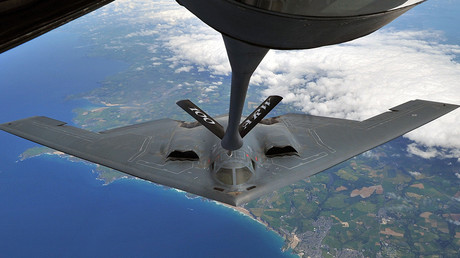Declassified docs reveal how Pentagon aimed to nuke USSR and China into oblivion

Plans for a nuclear war devised by the US Army in the 1960s considered decimating the Soviet Union and China by destroying their industrial potential and wiping out the bulk of their populations, newly declassified documents show.
A review of the US general nuclear war plan by the Joint Staff in 1964, which was recently published by George Washington University’s National Security Archive project, shows how the Pentagon studied options “to destroy the USSR and China as viable societies.”
The review, conducted two years after the Cuban Missile Crisis, devises the destruction of the Soviet Union “as a viable society” by annihilating 70 percent of its industrial floor space during pre-emptive and retaliatory nuclear strikes.
A similar goal is tweaked for China, given its more agrarian-based economy at the time. According to the plan, the US would wipe out 30 major Chinese cities, killing off 30 percent of the nation’s urban population and halving its industrial capabilities. The successful execution of the large-scale nuclear assault would ensure that China “would no longer be a viable nation,” the review reads.
The Joint Staff had proposed to use the “population loss as the primary yardstick for effectiveness in destroying the enemy society with only collateral attention to industrial damage.” This “alarming”idea meant that, as long as urban workers and managers were killed, the actual damage to industrial targets “might not be as important,”the George Washington University researchers said.
The 1964 plan doesn’t specify the anticipated enemy casualty levels, but – as the researchers note – an earlier estimate from 1961 projected that a US attack would kill 71 percent of the residents in major Soviet urban centers and 53 percent of residents in Chinese ones. Likewise, the 1962 estimate predicted the death of 70 million Soviet citizens during a “no-warning US strike” on military and urban-industrial targets.
The Pentagon continues to rely heavily on nuclear deterrence, and – just like in the 1960s – the US nuclear strategy still regards Russian and Chinese military capabilities as main “challenges” faced by Washington. The latest Nuclear Posture Review, adopted in February, outlined “an unprecedented range and mix of threats” emanating from Beijing and Moscow. The document, which mentions Russia 127 times, cites the modernization of the Russian nuclear arsenal as “troubling” for the US.
The existing nuclear strategy also allows the US to conduct nuclear strikes not only in response to enemies’ nuclear attacks, but also in response to “significant non-nuclear strategic attacks” on the US, its allies and partners.
The newest US Nuclear Posture Review was heavily criticized by Russia and China. Moscow denounced the strategy as “confrontational,” while Beijing described the Pentagon’s approach as an example of “Cold-War mentality.”


0 Comments:
Post a Comment
Subscribe to Post Comments [Atom]
<< Home